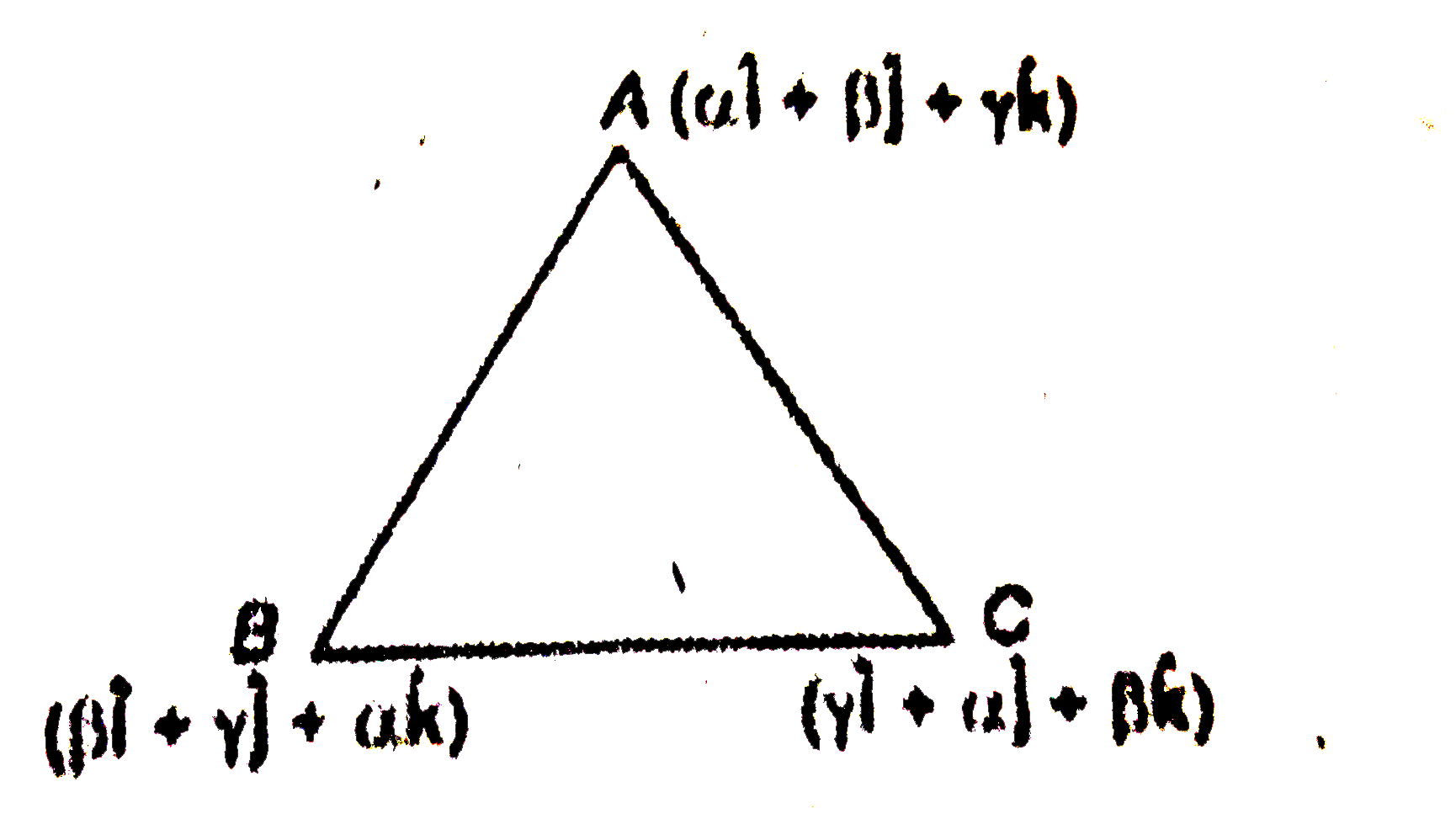Let α,β,γ be distinct real numbers. The points with position vectors αˆi+βˆj+γˆk,βˆi+γˆj+αˆk,γˆi+αˆj+βˆk
A
are collinera
B
form an equilateral triangle
C
form a scalene triangle
D
form a right angled triangle
Video Solution
Text Solution
Let given point be A, B and C with positive vectors αˆi+βˆj+γˆk,βˆi+γˆj+αˆkandγˆi+αˆj+βˆk
As α,βandγ are distinct real numbers, therefore ABC form a triangle.
Clearly, AB=OB−OA=(βˆi+γˆj+αˆk)−(αˆi+βˆj+γˆk)
=(β−α)ˆi+(γ−β)ˆj+(α−γ)ˆk

Now, |AB|=√(β−α)2+(γ−β)2+(α−γ)2
Similarly, BC=CA=√(β−α)2+(γ−β)2+(α−γ)2
∴ΔABC is an equilateral triangle.
|
Topper's Solved these Questions
- VECTOR ALGEBRABook:ARIHANT MATHSChapter:VECTOR ALGEBRAExercise:Exercise For Session 1
Explore 7 Videos
- VECTOR ALGEBRABook:ARIHANT MATHSChapter:VECTOR ALGEBRAExercise:Exercise For Session 2
Explore 17 Videos
- TRIGONOMETRIC FUNCTIONS AND IDENTITIESBook:ARIHANT MATHSChapter:TRIGONOMETRIC FUNCTIONS AND IDENTITIESExercise:Exercise (Questions Asked In Previous 13 Years Exam)
Explore 19 Videos
Similar Questions
Knowledge Check
Let α,βandγ be distinct real numbers. The points with position vectors αˆi+βˆj+γˆk,βˆi+γˆj+αˆkandγˆi+αˆj+βˆk
AA. Are collinearBB. Form an equilateral triangleCC. Form a scalene triangleDD. Form a right-angled triangleLet α,β,λ be distinct real numbers. The points with position vectros αˆi+βˆj+λˆk,βˆi+λˆj+αˆkandλˆi+αˆj+βˆk
Aare collinearBform an equilateral triangleCform a scalene triangleDform a right-angled triangleThe vector cosαcosβˆi+cosαsinβˆj+sinαˆk is a
Anull vectorBunit vectorCconstant vectorDnone of these
If α,β,γ are three distinct real numbers such than 0<α,β,γ<π2, then tan(α−β)+tan(β−γ)+tan(γ−α) is equal to :
View SolutionIf α,β,γ are three distinct real numbers such that 0<α,β,γ<π/2, then tan(α−β)+tan(β−γ)+tan(γ−α) is equal to :
View SolutionIf the three vectors a=ˆi+ˆj+ˆk,b=ˆi+ˆjandc=ˆiand(a×b)×c=αa+βb , then the value of α+β is
View Solutionsin(β+γ−α)+sin(γ+α−β)+sin(α+β−γ)−sin(α+β+γ)=
View SolutionIf α,β,γ be the zeros of the polynomial p(x) such that (α+β+γ)=3,(αβ+βγ+γα)=−10andαβγ=−24 then p(x) = ?
View Solution